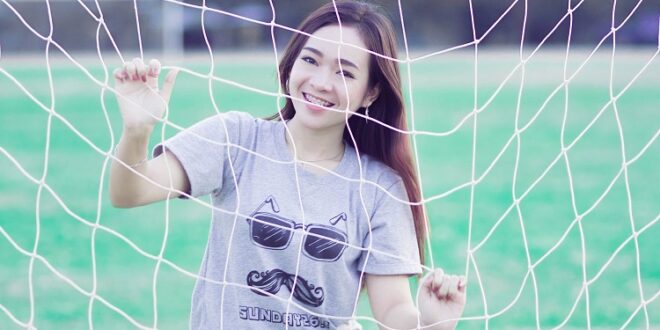If you’re into sports design, chances are you are already familiar with the concept of prototyping. As a sports designer, you constantly have to come up with new ideas for product development–whether it is a unique jersey, a new Michoacan hoodie design, or other professional templates.
A prototype is the creation of a working 3D print or rapid modeling for a sporting project. You can use a prototype to digitally develop new models to include sports designs in your latest templates.
As a sports designer looking to create sports mockups, a prototype involves creating a scaledown version. It demonstrates to your sports team, stakeholders, sports fans, and end users how the functionality set would look like when it is finished.
The sports design team is involved in creating recognizable brand sports merch. The merchandise business is a global one. According to a 2021 study, it accounted for a market value cap of over 30 billion US dollars.
This figure just means that more and more sports brands are investing into creating quality professional templates. The demand for quality is skyrocketing and sports designers have to draw up different product plans. Using prototypes should help discover the best quality for brand representation.
9 Benefits of Prototypes for Sports Designers
1. Develop New Templates
A template in the context of sports design is anything that serves as a guide or a pattern for designing. A prototype can help create any form of professional template for usual merchandise like hoodies and sweatshirts.
For instance, when the winter months are fast approaching, your sports team can request you to create a hoodie template for the winter season. A prototype can help you check the designs. So, you can see how it works for the team and look at possible adjustments.
2. Improve the Design
A prototype can help you improve designs on sports mockups. Sports mockups are artistic renditions of products. It represents the products in action and it can be model images or presentations of a proposed design.
Developing a prototype is a relatively inexpensive way to test several designs, and see how old designs can be improved.
3. It Facilitates Communication
A prototype involves discussing idea creation. This process helps to improve communication amongst team members with the design team and it also allows for active involvement.
Communication is important during concept development. It even gives room for the team members to contribute their opinions. With this practice, you are guaranteed to come out with the right fit. This interaction also helps detect faults or things that need improvement or reworking.
4. Improve the Quality
By testing out the prototype you have created, you can easily detect flaws. As a designer, you can improve the quality metric of your overall design by creating different testing phases for the prototype.
Sports designers can test different complex components of their designs through the prototype. In fact, in the global football leagues, sports designers working with the top teams around the world are always looking to improve upon the quality of their premier league jersey from the outgoing seasons.
5. Improve the Color
Using prototypes can help with color manipulation. Since it is a semi-finished product, probable color models can be added and subtracted. This process will help the designer understand color values–how each combination can stand out for the professional templates you are looking to create.
Generally, people will purchase merchandise based on color value. Before hands-on assessment of the quality of the product, the first thing that catches the attention of a prospective buyer is the color. Studies show that most of these choices are related to color psychology. This theory means an increased value perception in quality aesthetics. So, as a sports designer, you have to make sure to improve the color value on your templates.
6. Discover the True Cost of Production
Using prototypes can help you discover the true cost of assemblage for your sports merchandise. The process could involve trying to mass produce, for example, the best baseball jersey. It could also help you figure out the true cost of a simple football t-shirt design.
Creating a prototype for all sports mockups helps you quantify the true cost.
7. Relatively Inexpensive and Delivers Efficiency
With a prototype design, you can still be able to edit on your sports mockups. The editing process can help you remove things that are not needed, thus reducing production costs. This process also leads to efficiency.
A prototype helps you in evaluation, so you can take out materials not needed in the production. You would also be able to see if you will be using the right materials. You would discover if your production tools can be adjusted or modified to serve you better, allowing for a more durable product.
8. Manage Conflict
During the production of sports merchandise, you and your design team members can have a conflict of interest. For instance, one might agree for some designs to be included in this year’s merchandise. Whereas, another faction might not feel the need to include what was mentioned in this year’s line-up, since it was already done in the past season.
Creating a prototype is an efficient way to allow each member of the design sports team to test each product idea before coming up with a final decision. Prototypes help with design optimization, so you can create the best possible output.
9. Inspect for Product Integrity
A prototype allows you to check for any flaws in your creation. All of your sports mockups and professional templates are subject to an integrity test. The prototype allows you to test your product before the final delivery. Through this, you can inspect the quality and durability of your merchandise. Subsequently, this will help you detect problems and fix them right away.
Conclusion
A prototype is a sample of a product built to test concepts before a final product decision is attained. It helps sport designers create different professional templates. This process allows room for mistakes before coming up with the best output. With prototypes, you can test extensively and gather opinions that can help shape the right design.
 HammBurg Be informed with latest news, reviews, entertainment, lifestyle tips, and much more.
HammBurg Be informed with latest news, reviews, entertainment, lifestyle tips, and much more.




